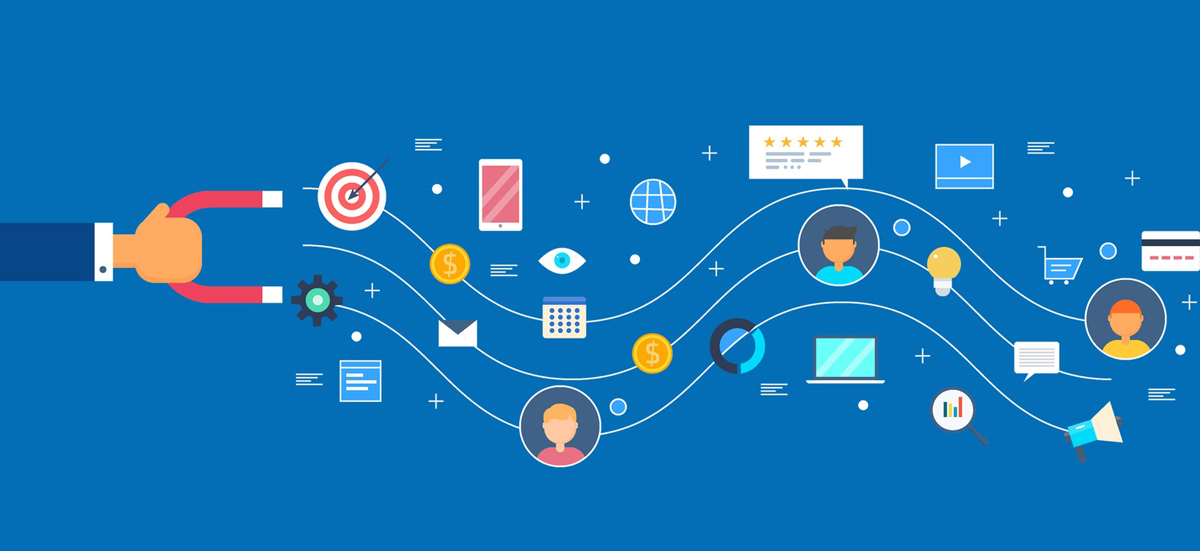In today’s competitive business landscape, having a great product or service isn’t enough. You need a well-structured sales funnel to guide potential customers from awareness to purchase. Think of a sales funnel as a journey—a roadmap that leads your prospects step-by-step toward becoming loyal customers. But how do you create a sales funnel that actually works? Let’s dive in and explore how to develop effective sales funnels that convert leads into paying customers.
What Is a Sales Funnel?
Before we get into the nitty-gritty, let’s break it down. A sales funnel is a visual representation of the customer journey, from the moment they discover your brand to the point they make a purchase. It’s called a “funnel” because, at each stage, some leads drop off, leaving you with the most qualified prospects at the bottom.
Imagine you’re pouring water into a funnel. Not all of it makes it to the bottom, right? The same goes for your leads. Your goal is to ensure as much “water” (or as many leads) as possible reaches the end of the funnel.
Why Are Sales Funnels Important?
Sales funnels are crucial because they help you understand your customers’ behavior. They allow you to identify where prospects are dropping off and optimize each stage to improve conversions. Without a sales funnel, you’re essentially shooting in the dark, hoping someone will buy from you. And let’s be honest—hope isn’t a strategy. If you’re looking for expert guidance, visit Lotiva, a digital marketing agency that knows how to stop scrolls and turn viewers into customers.
The Stages of a Sales Funnel
A typical sales funnel consists of four main stages:
- Awareness: The prospect becomes aware of your brand or product.
- Interest: The prospect shows interest in what you’re offering.
- Decision: The prospect considers whether to buy from you.
- Action: The prospect makes a purchase.
Each stage requires a different approach, and understanding these stages is key to building an effective sales funnel.
Step 1: Build Awareness
The first stage of the funnel is all about getting noticed. You need to attract potential customers and make them aware of your brand. But how do you do that?
Use Content Marketing
Content is king, and for a good reason. Blog posts, videos, podcasts, and social media content can help you reach a wider audience. For example, if you’re selling fitness equipment, you could create blog posts about workout tips or YouTube videos demonstrating how to use your products.
Leverage Social Media
Social media platforms like Instagram, Facebook, and LinkedIn are goldmines for building awareness. Share engaging content, run targeted ads, and interact with your audience to get your brand in front of the right people.
SEO Optimization
Make sure your website and content are optimized for search engines. Use relevant keywords, create high-quality backlinks, and ensure your site is user-friendly. This will help you rank higher on Google and attract organic traffic.
Step 2: Generate Interest
Once you’ve captured your audience’s attention, the next step is to pique their interest. This is where you showcase the value of your product or service.
Offer Free Resources
Everyone loves free stuff. Offer free resources like eBooks, webinars, or templates in exchange for their email address. This not only builds trust but also gives you a way to stay in touch with your leads.
Use Email Marketing
Email marketing is a powerful tool for nurturing leads. Send personalized emails that address your prospects’ pain points and offer solutions. For example, if you’re a SaaS company, you could send a series of emails explaining how your software can save time and increase productivity.
Create Engaging Content
At this stage, your content should be more focused on educating your audience. Case studies, testimonials, and product demos can help build credibility and keep your leads engaged.
Step 3: Help Them Decide
Now that your leads are interested, it’s time to help them make a decision. This is where you convince them that your product or service is the best choice.
Highlight Benefits, Not Features
Instead of focusing on the technical aspects of your product, emphasize how it can solve your customers’ problems. For example, if you’re selling a project management tool, don’t just talk about its features—explain how it can help teams collaborate more effectively and meet deadlines.
Offer Social Proof
People trust other people. Use testimonials, reviews, and case studies to show that others have benefited from your product. If possible, include before-and-after scenarios to demonstrate the impact of your offering.
Provide a Clear Call-to-Action (CTA)
Make it easy for your leads to take the next step. Use clear and compelling CTAs like “Start Your Free Trial,” “Schedule a Demo,” or “Get 50% Off Today.” Place these CTAs strategically on your website, emails, and ads.
Step 4: Encourage Action
The final stage of the funnel is all about converting leads into customers. This is where the magic happens, but it’s also where many businesses drop the ball.
Simplify the Buying Process
A complicated checkout process can scare away potential customers. Make it as easy as possible for them to complete their purchase. Offer multiple payment options, provide clear instructions, and ensure your website is mobile-friendly.
Create a Sense of Urgency
Scarcity and urgency are powerful motivators. Use limited-time offers, countdown timers, or low-stock alerts to encourage your leads to act quickly.
Follow Up
Not all leads will convert on their first visit. Use retargeting ads and follow-up emails to remind them of your offer. Sometimes, all it takes is a little nudge to seal the deal.
Measuring and Optimizing Your Sales Funnel
Once your sales funnel is up and running, the work doesn’t stop there. You need to continuously measure its performance and make improvements. Here’s how:
Track Key Metrics
Monitor metrics like conversion rates, bounce rates, and customer acquisition costs. Tools like Google Analytics and CRM software can help you gather this data.
A/B Testing
Experiment with different elements of your funnel, such as headlines, CTAs, and landing page designs. A/B testing can help you identify what works best and optimize accordingly.
Gather Feedback
Ask your customers for feedback. What did they like about the buying process? What could be improved? Use this information to refine your funnel.
Common Mistakes to Avoid
Even the best sales funnels can fail if you make these common mistakes:
- Ignoring Your Audience: Your funnel should be tailored to your target audience. Don’t try to appeal to everyone.
- Overcomplicating Things: Keep your funnel simple and easy to navigate.
- Neglecting Follow-Ups: Don’t let leads slip through the cracks. Follow up consistently.
- Failing to Test: Always test and optimize your funnel to ensure it’s performing at its best.
Tools to Build and Manage Your Sales Funnel
Here are some tools that can help you create and manage an effective sales funnel:
| Tool | Purpose |
|---|---|
| HubSpot | CRM, email marketing, and automation |
| ClickFunnels | Building and optimizing sales funnels |
| Mailchimp | Email marketing and automation |
| Google Analytics | Tracking and analyzing website traffic |
| Canva | Creating visually appealing content for your funnel |
Conclusion
Building an effective sales funnel takes time, effort, and a deep understanding of your audience. But when done right, it can transform your business and skyrocket your conversions. Remember, a sales funnel isn’t a one-size-fits-all solution. It’s a dynamic process that requires constant tweaking and optimization.
So, are you ready to create a sales funnel that converts? Start by understanding your audience, crafting compelling content, and using the right tools. And don’t forget to measure your results and make improvements along the way. With a well-designed sales funnel, you’ll be well on your way to turning leads into loyal customers.



